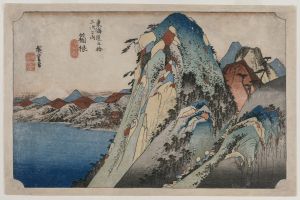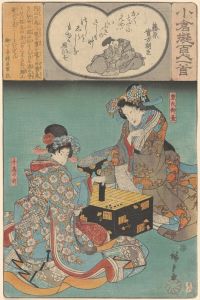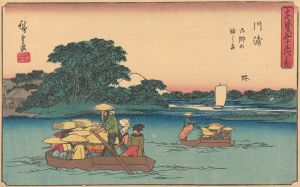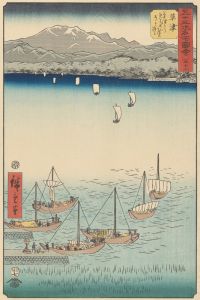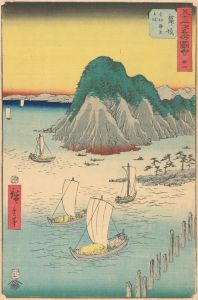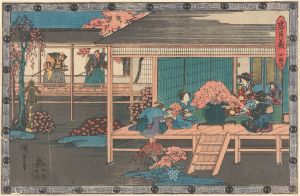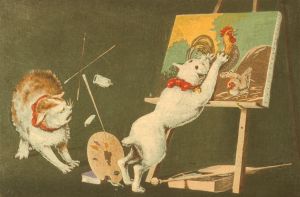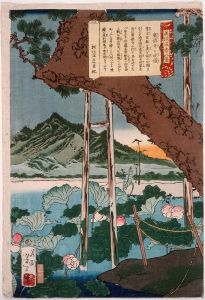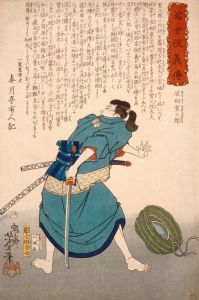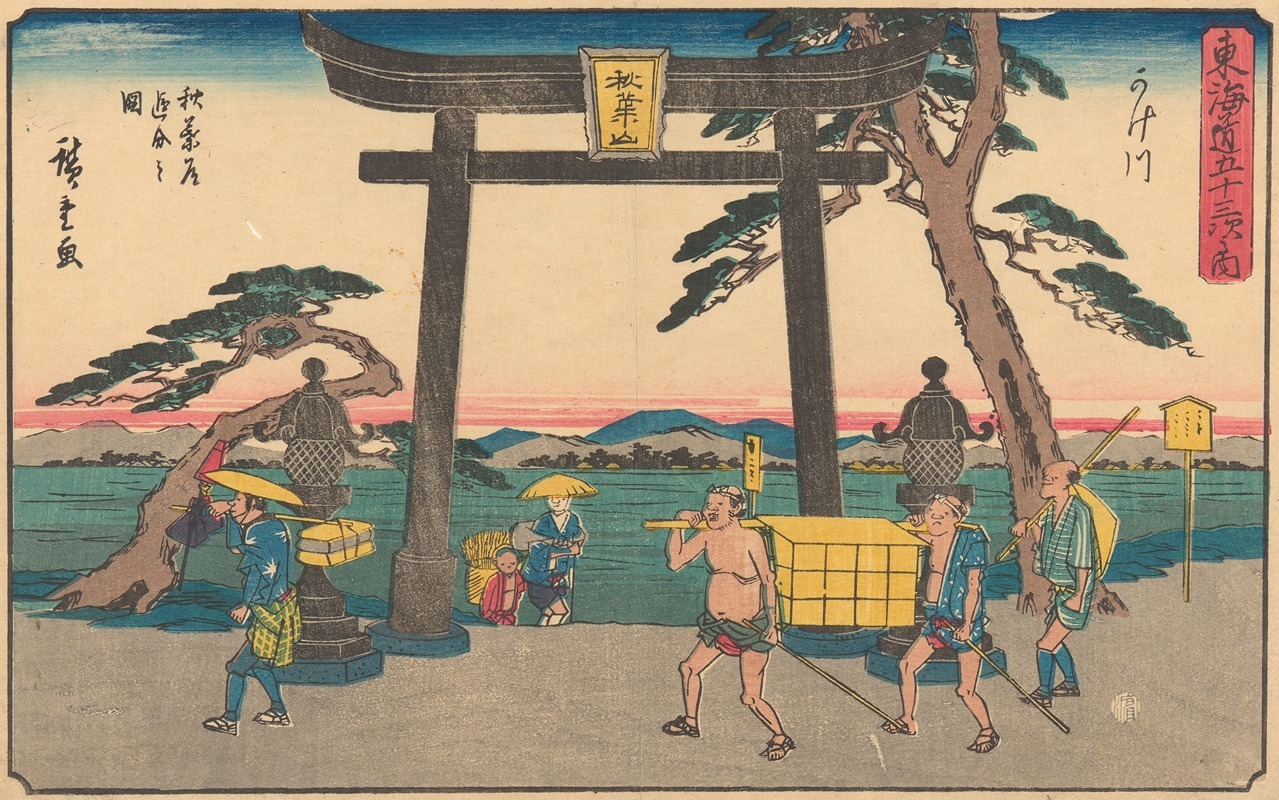
Kakegawa
A hand-painted replica of Andō Hiroshige’s masterpiece Kakegawa, meticulously crafted by professional artists to capture the true essence of the original. Each piece is created with museum-quality canvas and rare mineral pigments, carefully painted by experienced artists with delicate brushstrokes and rich, layered colors to perfectly recreate the texture of the original artwork. Unlike machine-printed reproductions, this hand-painted version brings the painting to life, infused with the artist’s emotions and skill in every stroke. Whether for personal collection or home decoration, it instantly elevates the artistic atmosphere of any space.
Kakegawa by Andō Hiroshige is a woodblock print that is part of the renowned series "The Fifty-three Stations of the Tōkaidō" (Tōkaidō Gojūsan-tsugi no Uchi). This series, created in the early 1830s, is one of Hiroshige's most celebrated works and captures the scenic beauty and cultural significance of the Tōkaidō road, which was the main travel and transport route between Edo (modern-day Tokyo) and Kyoto during the Edo period in Japan.
Andō Hiroshige, a master of the ukiyo-e genre, is known for his innovative compositions and ability to convey the atmosphere of a scene with great sensitivity. His work often features landscapes, birds, and flowers, but it is his travel series that have garnered the most acclaim. "The Fifty-three Stations of the Tōkaidō" series consists of 55 prints, including the starting point at Nihonbashi in Edo and the terminus at Kyoto, with 53 stations in between.
Kakegawa is one of these stations, specifically the 27th station on the Tōkaidō road. The print depicts the area around Kakegawa, which is located in present-day Shizuoka Prefecture. In Hiroshige's depiction, the viewer can observe a tranquil scene that captures the essence of rural Japan during the Edo period. The composition typically includes travelers on the road, local inhabitants, and the natural landscape, which might feature mountains, rivers, or fields, depending on the specific location.
Hiroshige's work is characterized by its use of perspective and color to create depth and mood. In the Kakegawa print, as in many others in the series, he employs a combination of vibrant and subtle colors to evoke the time of day and the season, enhancing the viewer's sense of being transported to that particular moment and place. The prints were produced using the traditional ukiyo-e woodblock printing technique, which involved the collaboration of the artist, carvers, and printers to create the final image.
The Tōkaidō series was highly popular in its time and remains influential today, offering insights into the culture, geography, and daily life of Edo-period Japan. Hiroshige's ability to capture the transient beauty of the landscape and the human experience of travel has made these prints enduringly popular, both in Japan and internationally.
Kakegawa, like the other stations in the series, serves as a historical document that provides a glimpse into the past, illustrating the importance of the Tōkaidō road as a conduit for commerce, communication, and cultural exchange. Hiroshige's work continues to be celebrated for its artistic merit and its role in preserving the visual history of Japan's Edo period.








